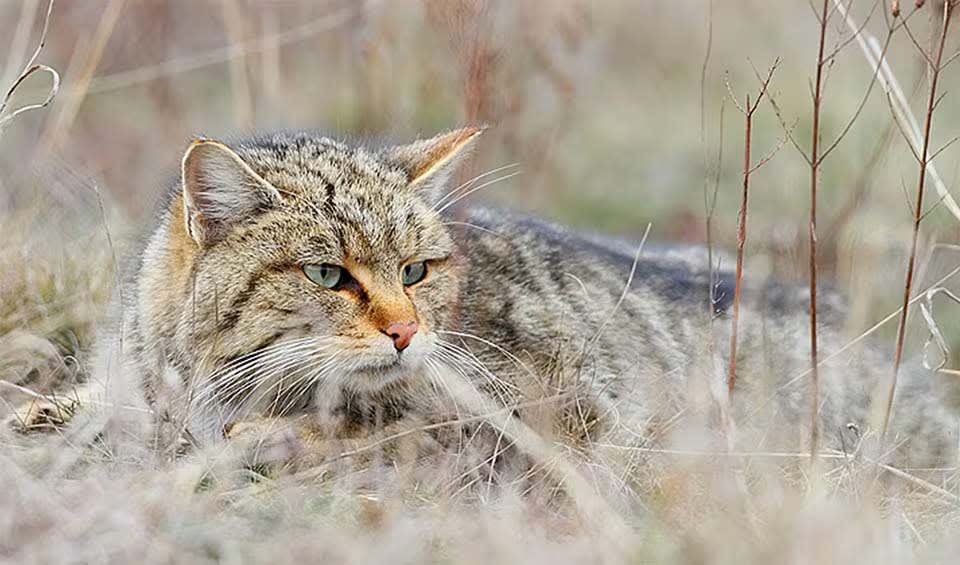With its robust build and striking appearance, this species stands as a testament to the resilience and adaptability of wild felines. The coat of the European Wildcat is a canvas of grey-brown, adorned with dark stripes that grace the head, neck, limbs, and back, culminating in a distinctly bushy and blunt tail marked by several black rings and a black tip. During the winter months, their already thick coats become denser, giving them a larger appearance compared to other wildcat species and providing essential insulation against the cold.
The physical characteristics of the European Wildcat, such as its broad head and wide-set ears, are not just aesthetic traits but adaptations that enhance its hunting abilities. These wildcats are skilled predators, relying primarily on small rodents like mice, rats, and voles to sustain them. However, their diet is not limited to these creatures; they also partake in insects, birds, frogs, lizards, hares, and occasionally poultry, showcasing their opportunistic feeding habits.
European Wildcats are primarily nocturnal, a behavior that allows them to hunt under the cover of darkness and avoid detection by both prey and potential threats. However, in regions where human activity is minimal, these wildcats exhibit a more flexible schedule, venturing out during daylight hours with peaks in activity at dawn and dusk.
Despite their adaptability and prowess, European Wildcats face significant challenges. Habitat loss due to deforestation, agricultural expansion, and urban development has led to the fragmentation of their territories, making it increasingly difficult for them to find food, mates, and suitable denning areas. Additionally, interbreeding with domestic cats poses a genetic threat to the wildcat population, potentially diluting the unique genetic makeup that defines the species.
Distribution
 Albania
Albania Andorra
Andorra Armenia
Armenia Austria
Austria Azerbaijan
Azerbaijan Belgium
Belgium Bosnia And Herz.
Bosnia And Herz. Bulgaria
Bulgaria Croatia
Croatia Czechia
Czechia France
France Georgia
Georgia Germany
Germany Greece
Greece Hungary
Hungary Israel
Israel Italy
Italy Luxembourg
Luxembourg Moldova
Moldova Montenegro
Montenegro Netherlands
Netherlands North Macedonia
North Macedonia Poland
Poland Portugal
Portugal Romania
Romania Russia
Russia Serbia
Serbia Slovakia
Slovakia Slovenia
Slovenia Spain
Spain Switzerland
Switzerland Turkey
Turkey Ukraine
Ukraine United Kingdom
United KingdomAnything we've missed?
Help us improve this page by suggesting edits. Glory never dies!
Suggest an editGet to know me
Terrestrial / Aquatic
Altricial / Precocial
Polygamous / Monogamous
Dimorphic (size) / Monomorphic
Active: Diurnal / Nocturnal
Social behavior: Solitary / Pack / Herd
Diet: Carnivore / Herbivore / Omnivore / Piscivorous / Insectivore
Migratory: Yes / No
Domesticated: Yes / No
Dangerous: Yes / No





